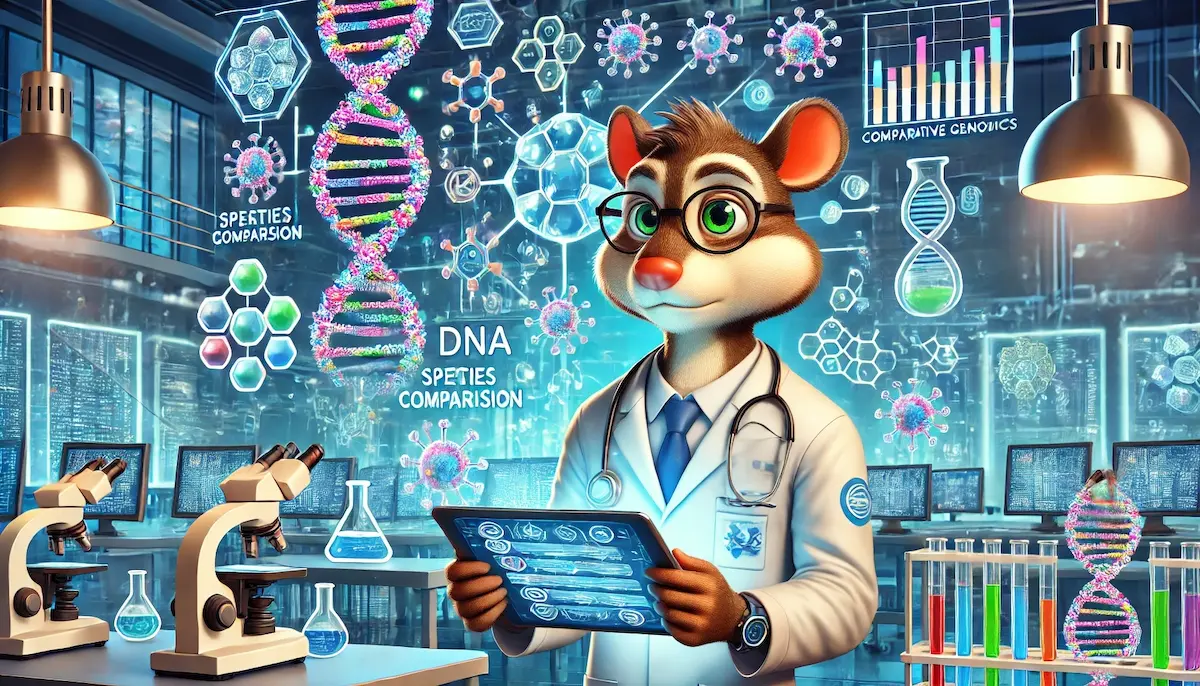Comparative genomics is a field that examines the similarities and differences in the genomes of different species. By comparing the DNA sequences of various organisms, scientists can gain insights into their evolutionary relationships, understand the function of genes, and identify the genetic basis of traits and diseases. This powerful approach provides a deeper understanding of biology, helping to unravel the complexities of life and evolution.
The Basics of Comparative Genomics
Comparative genomics involves analyzing the complete genetic material, or genome, of different organisms. The primary goal is to identify conserved elements—genes or sequences that are similar across species—suggesting that they have been preserved through evolution due to their essential functions. Conversely, differences in genomic sequences can reveal how species have adapted to their environments or evolved new traits.
Key concepts in comparative genomics include homologous genes, which are genes that share a common ancestry. These genes can be:
- Orthologs: Genes in different species that evolved from a common ancestral gene and usually retain the same function.
- Paralogs: Genes that arise by duplication within a genome and may evolve new functions.
By studying these genes, researchers can trace the evolutionary history of species, discover how new functions evolve, and identify genes that are critical for survival.
Applications of Comparative Genomics
Comparative genomics has a wide array of applications in various scientific fields, including medicine, agriculture, and evolutionary biology:
Understanding Human Health and Disease
Comparative genomics plays a crucial role in identifying genes associated with diseases. By comparing the human genome with those of other organisms, researchers can pinpoint genes that are conserved across species and thus likely to play essential roles in basic biological processes. This can help in identifying potential targets for new drugs or understanding the genetic basis of diseases.
For instance, studying the genomes of model organisms like mice, fruit flies, or zebrafish—which share many genes with humans—enables scientists to explore gene function and disease mechanisms in a controlled environment.
Advancing Evolutionary Biology
In evolutionary biology, comparative genomics helps trace the evolutionary history of species. By comparing genomes, scientists can identify genetic changes that have allowed species to adapt to different environments or evolve new traits. This approach provides insights into natural selection and evolutionary processes, helping to explain how biodiversity arises and how species are related.
Improving Agriculture
Comparative genomics is also used to enhance crops and livestock. By comparing the genomes of wild relatives with those of domesticated species, researchers can identify genes responsible for desirable traits, such as drought resistance, disease resistance, or higher yields. This information is valuable for breeding programs aimed at improving food security and sustainability.
For example, by understanding the genetic basis of pest resistance in wild plants, scientists can develop crops that are more resilient to pests, reducing the need for chemical pesticides.
The Future of Comparative Genomics
The future of comparative genomics is bright, with technological advancements continually pushing the boundaries of what can be achieved. The decreasing cost of DNA sequencing allows for the genomes of more species to be sequenced, expanding the datasets available for comparison. This growing wealth of information enables more comprehensive studies, revealing new insights into the genetic basis of life.
One of the exciting areas of future research is the study of non-coding regions of the genome—parts of the DNA that do not code for proteins but play crucial roles in regulating gene expression. Comparative genomics is helping to uncover how these regions have evolved and how they contribute to the diversity of life.
Additionally, as comparative genomics becomes more integrated with other fields like functional genomics and systems biology, researchers will be able to build more detailed models of how genes and genetic networks operate within cells and organisms. This holistic view will enhance our understanding of complex biological systems and may lead to breakthroughs in medicine, agriculture, and environmental science.
Blockfine thanks you for reading and hopes you found this article helpful.
